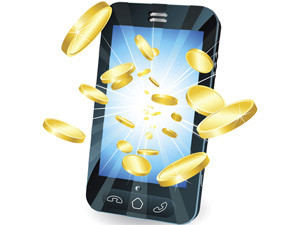
Better uptake of mobile money payment services will be seen among those wishing to make single dollar transactions, says Vahid Monadjem, CEO of Nomanini.
According to Monadjem, allowing single dollar transactions in the informal retail sector could be the answer to mobile money's last mile issue.
Although mobile money is a popular payments solution in some parts of the continent, the rest of the African nations haven't had the same success in the uptake of the service.
Kenya's mobile money service M-Pesa has gained much traction in the East African region. Launched by mobile operator Safaricom in 2007, M-Pesa now has more than 20 million subscribers, according to the Communications Authority of Kenya.
While the M-Pesa success story has been well documented for disrupting the traditional financial system, with its reliance on formal tellers and ATMs, the values transacted are still relatively large.
"The average M-Pesa transaction value is over $20, which is a lot if you earn less than $2 per day, which well over one billion people globally do. It's time to extend the gains of the agency model to the next level: to single dollar transactions with general retail merchants on every street corner," says Monadjem.
Turn to merchants
According to Frost & Sullivan, the value of mobile money transactions in Sub-Saharan Africa reached $656 million in 2014, and may more than double to $1.3 billion in the next four years.
In countries like South Africa and Nigeria where the markets already have an established banking system and culture, growth and uptake of mobile money services has been slow.
However, both countries have thriving merchants markets in the informal retail trade, which is a ubiquitous touch-point for consumers.
Merchants sell all sorts of other items, so processing of transactions provides an additional income or a complementary income for the rest of their business, says Monadjem. "A merchant wants to do small transactions to attract customers."
He adds: "There is a need for a third tier in the payments system if the last mile of payments is to be covered. The first tier is of course bank branches and ATMs, the second tier is mobile money agents, and the third tier is merchant payments.
"We need to make single dollar transactions a cost-effective reality, which it cannot be under the current system, as it is impossible for single dollar transactions to cover the costs of the first and second tier models."
Inclusive approach
Monadjem says allowing single dollar transactions within financial services provides one more level to banking the unbanked, which can then be extended over time to transactions for other things such as microfinance and insurance.
"To create a truly cashless society will require that the liquidity and cost of using of e-money to be on a par with cash, for those at the bottom of the pyramid as well as at the top. That is the story of single dollar payments, where currently cash has a better value proposition for daily payments," he says.
However, Monadjem notes there are some challenges to making the single dollar transaction method for mobile money possible. "Payments are a low margin business and last mile is an unattractive area to serve for many businesses regardless of what sector you are in."
There has been little consolidation in the market, and the immaturity of the ecosystem is a hindrance to doing it at scale, he says. "By utilising the huge existing merchant network to make single dollar payments more accessible and affordable to the bottom of the pyramid, a third tier is possible."
Share